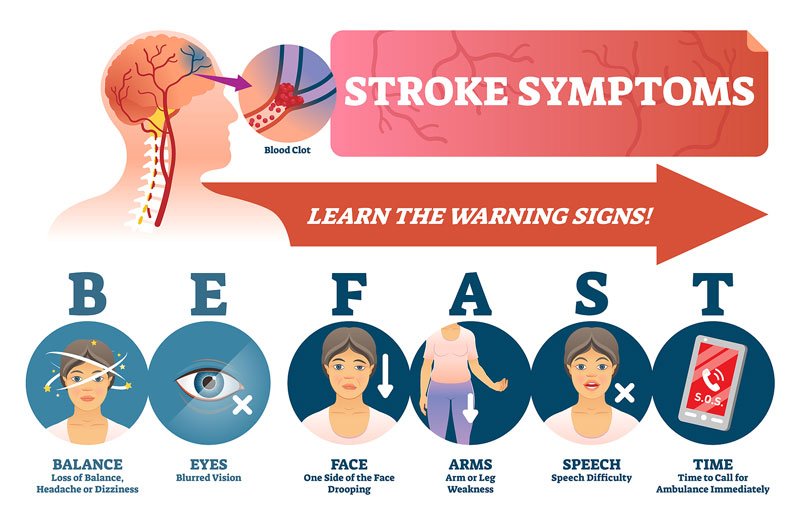Before a tornado hits, it typically announces itself with some classic indicators: huge hail, a dark, almost green sky and emergency sirens. By heeding these warnings from Mother Nature, we have more time to take cover before seeing a twister.
When something is wrong with our health, bodies will often provide indicators. Ignoring symptoms of a serious illness is like going out on the porch to watch a funnel cloud roar into the yard while a harried meteorologist, pleading with us to take cover, plays on TV in the background.
Take strokes, for example.
MINI STROKES MAY WARN OF WORSE TO COME
Prior to a stroke, the body may receive a warning in the form of a transient ischemic attack (TIA), commonly referred to as “mini stroke.” Professionals in neurology are moving away from using the term “mini stroke” because the word “mini” makes it sound much less serious than it is.
While TIAs are usually temporary and do not cause permanent brain damage, The Big One may be on the way. After a TIA, 10% will have a major stroke within two days, 15% will have a stroke within three months and 25% will have a recurrent event within three months, which is another TIA or a major stroke.
A major stroke, which can cause permanent injury or death, is as dangerous as an F5 twister headed in your direction.
RISK FACTORS FOR TRANSIENT ISCHEMIC ATTACK
There is an increased risk for a TIA with poorly controlled risk factors, such as:
- High blood pressure
- High cholesterol
- Diabetes
- Heart condition
- Smoking
WHAT HAPPENS DURING A TIA
During a TIA, there is a temporary disruption in the blood supply to a part of the brain. This is usually caused by a temporary blood clot in a blood vessel of the brain.
SYMPTOMS OF TIAS
The symptoms of a TIA are like those of a regular stroke but usually milder and not as long-lasting. They can include sudden:
- Weakness or numbness in the face, arm or leg, typically on one side of the body
- Confusion or trouble speaking or understanding speech
- Trouble seeing in one or both eyes
- Trouble walking, dizziness, loss of balance or coordination
- Severe headache with no known cause
TIA symptoms typically last for a few minutes to a few hours and resolve on their own. If symptoms persist or worsen, it could indicate a major stroke.

MEDICAL CARE FOR TIAS
- Call 911; a TIA is a medical emergency. The symptoms may go away quickly, but they may return. By calling 911, EMS can perform an evaluation and provide safe transportation to the emergency room.
- When the patient gets to the hospital, their doctor probably will perform a physical exam, blood tests and brain scans to determine where their TIA originated. Depending on the cause, treatment may include medications to lower blood pressure, prevent future blood clots or lower cholesterol or surgery to remove blood-vessel blockages.
RECOVERY AND PREVENTION
Stroke survivors must take care of themselves after a TIA to reduce their risk of a future stroke. It’s always easier said than done, but after a TIA, stroke survivors should eat a balanced diet, exercise, quit smoking, get adequate sleep and take their medication. Prioritizing yourself can be difficult, but self-care is paramount during this time.
By being vigilant and heeding the warning signs, you can change your health forecast.



